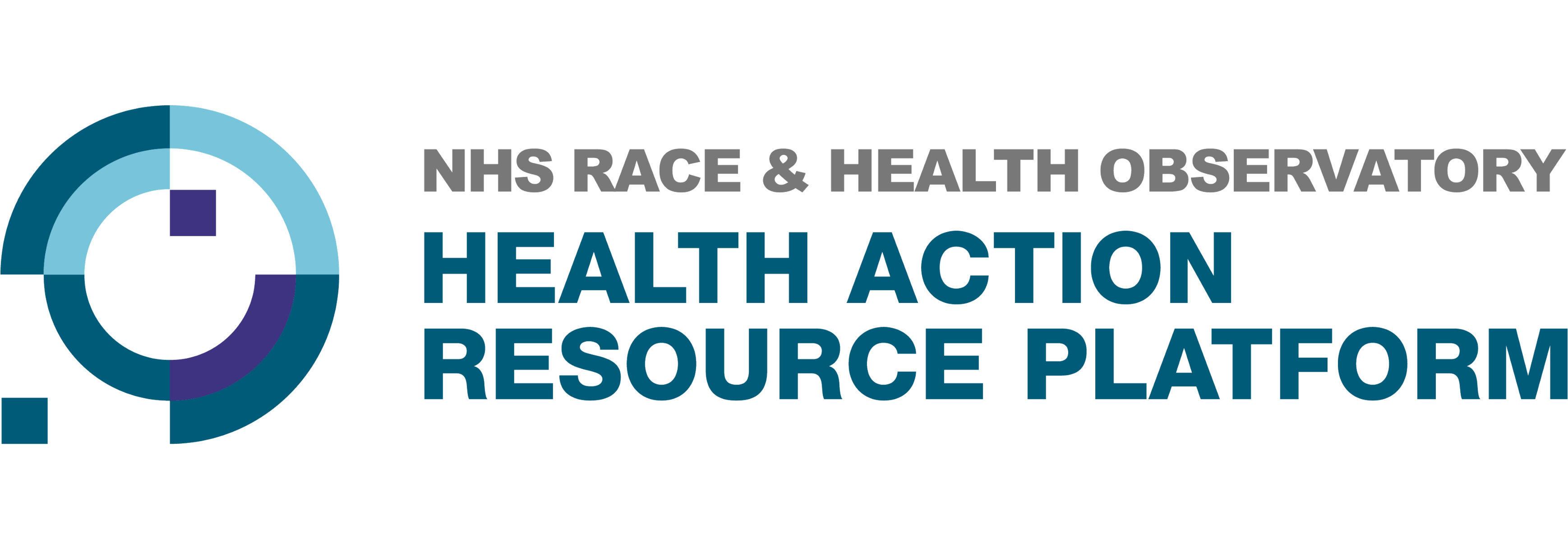Introduction
The COVID-19 pandemic was a once-in-a-generation health crisis which, as well as transforming life around the world, also served to shine a spotlight on health inequities, where ethnic minority communities were seen to be more directly and adversely impacted by the disease than their White counterparts.
When we look at COVID-19 deaths in the UK by ethnicity, we see higher mortality rates among Black and Asian groups than the White majority population.[1] In the first wave of the disease, this disparity was stark. For the Black African group, the mortality rate during the first wave of the disease was 3.7 times greater than for the White British group for males, and 2.6 greater for females. For Bangladeshi people the rate was 3.0 for males, 1.9 for females; for Black Caribbean groups 2.7 for males, 1.8 for females; and for Pakistani groups 2.2 for males, 2.0 for females.[2] By the point of the second wave, these figures rose for Bangladeshi people, reaching 5.0 and 4.1 for men and women respectively.
We also saw during the vaccine roll-out that Black and Asian communities experienced higher rates of vaccine hesitancy.[3] Data drawn from a subset of participants in the UK Household Longitudinal Study (n=12,035), showed that while overall vaccine hesitancy was low (17%), the rate of hesitancy was significantly higher in in Black (71.8%) and Pakistani/Bangladeshi (42.3%) ethnic groups. Data drawn from a subset of participants in the UK Household Longitudinal Study (n=12,035), showed that while overall vaccine hesitancy was low (17%), the rate of hesitancy was significantly higher in in Black (71.8%) and Pakistani/Bangladeshi (42.3%) ethnic groups.[4]
Because it was a crisis, policymakers at the time might be forgiven for focusing their efforts on the effects rather than the causes of the disease, but it is vital that, with hindsight, we properly interrogate the reasons for these disparities and do not let this tendency seep into everyday policy discourse.
x5 ⇑Bangladeshi men
Bangladeshi men were up to 5x as likely to die as White men at early stages of the pandemic [5]
Source: ONS- Updating ethnic contrasts in deaths involving the coronavirus (COVID-19), May 2021
71.8%Vaccine hesitancy
Vaccine hesitancy among Black people was as high as 71.8%, compared to an overall rate of just 17%.[6]
23% ⇑Black and Asian communities
Black and Asian communities had around a 23% higher risk of experiencing excess deaths as a result of COVID-19
Source: The Race Foundation, Not by choice – the unequal impact of the COVID-19 pandemic, July 2023
References
- [1] Abdalla M. Ethnicity and Adverse COVID-19 Outcomes in the UK: A Scoping Review. Public Health Institute Journal. 2021 Dec 3:2.
- [2] Office for National Statistics website, Updating ethnic contrasts in deaths involving the coronavirus (COVID-19), England: 24 January 2020 to 31 March 2021 (26 May 2021)
- [3] Public Health England, COVID-19 vaccination first phase priority groups (23 April 2021)
- [4] Woolf, Katherine, et al. “Ethnic differences in SARS-CoV-2 vaccine hesitancy in United Kingdom healthcare workers: Results from the UK-REACH prospective nationwide cohort study.” medRxiv (2021).
